An energy crisis occurs when the demand for energy resources outpaces the available supply, leading to significant economic, social, and environmental challenges. In India, the world’s third-largest energy consumer, this crisis has become increasingly apparent in recent years. With a population of approximately 1.4 billion and one of the fastest-growing major economies globally, India’s energy demand is rising rapidly, putting immense pressure on its energy infrastructure and resources.
India’s energy landscape is complex and diverse, encompassing a wide range of fuel sources, including traditional fossil fuels like coal, oil, and gas, as well as renewable sources such as solar, wind, and hydropower. Despite significant progress in expanding its energy capacity, India continues to face substantial challenges in meeting its growing energy needs while balancing economic growth, environmental sustainability, and energy security.
Addressing the energy crisis is of paramount importance for India’s continued economic development, social progress, and environmental sustainability. This comprehensive analysis will delve into the multifaceted causes of India’s energy crisis, examine its impacts, explore mitigation strategies, and consider the future outlook for the country’s energy sector.
Causes of Energy Crisis in India
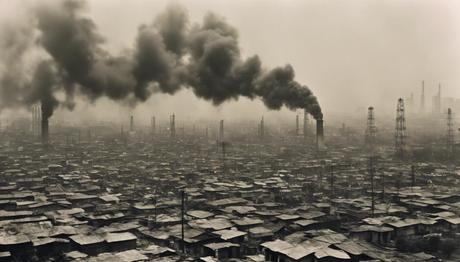
Limited Domestic Energy Resources
India’s energy crisis is exacerbated by its limited domestic energy resources, particularly in relation to its massive and growing demand. This scarcity of resources has led to a heavy reliance on energy imports, making the country vulnerable to global market fluctuations and geopolitical tensions.
Insufficient coal, oil, and gas reserves
Despite being the world’s second-largest coal producer, India’s coal reserves are insufficient to meet its long-term energy needs. The country’s proven coal reserves are estimated at around 101.3 billion tonnes, which at current consumption rates, would last approximately 97 years. However, the quality of much of this coal is poor, with high ash content and low calorific value.
India’s oil and gas reserves are even more limited:
ResourceProven ReservesYears of Supply at Current Consumption
Oil4.7 billion barrels14.7 years
Natural Gas1.3 trillion cubic meters43.8 years
These limited reserves force India to import a significant portion of its oil and gas needs, with imports accounting for over 80% of its oil consumption and 50% of its gas consumption.
Quality issues with domestic coal
The quality of India’s domestic coal is a significant concern. Much of India’s coal is of low grade, with high ash content (30-50%) and low calorific value. This poor quality leads to inefficiencies in power generation and increased environmental pollution. The use of low-quality coal also results in higher transportation costs and increased wear and tear on power plant equipment.
Heavy reliance on energy imports
India’s limited domestic resources have led to a heavy dependence on energy imports, particularly for oil and gas. In the fiscal year 2022-23, India’s energy import bill reached a staggering $210 billion, with crude oil imports alone accounting for $163 billion. This dependence on imports not only strains India’s foreign exchange reserves but also makes the country vulnerable to global price fluctuations and geopolitical tensions.
Infrastructure Issues
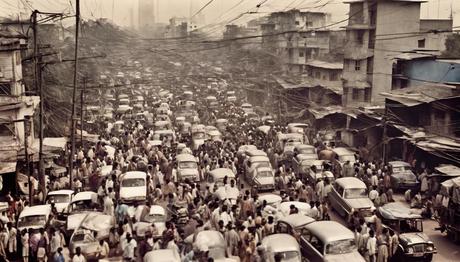
India’s energy infrastructure is inadequate to meet its growing demand, leading to frequent power cuts and blackouts, particularly in rural areas. The country’s power transmission and distribution network is outdated and inefficient, resulting in significant losses during transmission and distribution.
Inadequate and outdated energy infrastructure
India’s power generation capacity has grown significantly in recent years, reaching 404 GW as of March 2023. However, the transmission and distribution infrastructure has not kept pace with this growth. The country’s power grid is characterized by:
- Aging equipment and technology
- Insufficient transmission capacity
- Inadequate inter-regional grid connectivity
- Poor maintenance practices
These issues lead to frequent breakdowns, high transmission and distribution losses, and an inability to effectively distribute power across regions.
Frequent power cuts and blackouts
Power cuts and blackouts are a common occurrence in many parts of India, particularly during peak demand periods. In 2022, India faced its worst power crisis in over six years, with power cuts lasting up to 14 hours a day in some states. The frequency and duration of these outages vary across regions:
RegionAverage Duration of Daily Power Cuts (2022)
North India8-10 hours
South India2-4 hours
West India1-3 hours
East India6-8 hours
Northeast India4-6 hours
These power cuts significantly impact economic productivity and quality of life, particularly in rural and semi-urban areas.
Impact on rural electrification
While India has made significant progress in rural electrification, with the government claiming 100% village electrification in 2018, the quality and reliability of power supply in rural areas remain poor. Many rural households receive only a few hours of electricity per day, and power cuts are more frequent and prolonged compared to urban areas. This disparity in energy access hinders rural development and exacerbates urban-rural inequality.
Increasing Energy Demand
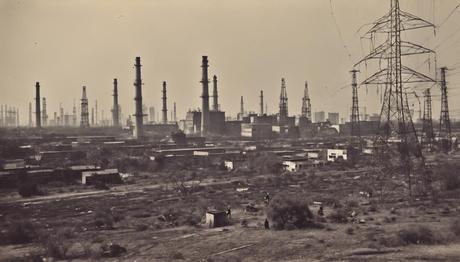
India’s energy demand is growing rapidly, driven by population growth, industrialization, and economic development. This increasing demand puts significant pressure on the country’s energy resources and infrastructure.
Population growth and industrialization
India’s population is projected to surpass China’s by 2023, becoming the world’s most populous country. This growing population, coupled with rapid urbanization and industrialization, is driving up energy demand. Key statistics include:
- Population growth rate: 1% per annum
- Urbanization rate: 2.3% per annum
- Industrial sector growth rate: 5.2% (2022-23)
Post-pandemic economic recovery
The COVID-19 pandemic initially led to a sharp decline in energy demand due to lockdowns and reduced economic activity. However, as the economy recovers, energy demand is rebounding strongly. In 2022, India’s energy demand grew by 8.5% compared to the previous year, surpassing pre-pandemic levels.
Rising consumption in commercial and industrial sectors
The commercial and industrial sectors are major drivers of India’s increasing energy demand. These sectors account for approximately 50% of the country’s total electricity consumption. Key trends include:
- Industrial sector electricity consumption growth: 9.5% (2022-23)
- Commercial sector electricity consumption growth: 11.2% (2022-23)
- Data center energy consumption: Expected to grow at 15-18% annually
Dependence on Fossil Fuels

India’s energy mix is heavily reliant on fossil fuels, particularly coal, which poses significant challenges for energy security and environmental sustainability.
Over-reliance on coal (70% of power needs)
Coal remains the dominant fuel in India’s energy mix, accounting for approximately 70% of the country’s electricity generation. This heavy reliance on coal has several implications:
- High carbon emissions: India is the world’s third-largest emitter of greenhouse gases
- Environmental degradation: Coal mining and burning contribute to air and water pollution
- Health impacts: Air pollution from coal-fired power plants causes an estimated 100,000 premature deaths annually in India
Slow transition to renewable energy sources
While India has made significant strides in renewable energy deployment, the transition away from fossil fuels has been slow. As of March 2023, renewable energy sources (excluding large hydro) accounted for 28.1% of India’s total installed power capacity. However, their share in actual electricity generation remains lower at around 12%.
The slow transition is attributed to several factors:
- High upfront costs of renewable energy projects
- Intermittency issues with solar and wind power
- Lack of adequate energy storage solutions
- Grid integration challenges
- Policy and regulatory uncertainties
Supply Chain Disruptions
Global supply chain issues, exacerbated by events such as the COVID-19 pandemic and geopolitical conflicts, have significantly impacted India’s energy sector.
Global supply chain issues post-COVID-19
The COVID-19 pandemic disrupted global supply chains, affecting the energy sector in several ways:
- Delays in equipment and component deliveries for power projects
- Shortages of critical materials and spare parts
- Increased shipping costs and logistical challenges
- Labor shortages due to lockdowns and movement restrictions
These disruptions led to project delays and increased costs for both conventional and renewable energy projects.
Impact of international events (e.g., Russia-Ukraine war)
The Russia-Ukraine war has had significant implications for global energy markets, affecting India’s energy security:
- Increased volatility in global oil and gas prices
- Disruptions in coal and oil supply chains
- Geopolitical tensions affecting energy trade relationships
India, as a major energy importer, has been particularly vulnerable to these global market disruptions.
Climate Change and Environmental Factors
Climate change and environmental concerns are increasingly impacting India’s energy sector, affecting both production and consumption patterns.
Extreme weather events affecting energy production
India is experiencing more frequent and severe extreme weather events due to climate change, which impact energy production:
- Floods: Disrupt coal mining operations and damage power infrastructure
- Droughts: Reduce hydropower generation and affect cooling water availability for thermal power plants
- Heatwaves: Increase cooling demand and strain the power grid
In 2022, India experienced its hottest March in 122 years, leading to widespread power outages and a surge in electricity demand.
Environmental concerns limiting coal extraction
Environmental regulations and public opposition are increasingly limiting coal extraction in India:
- Forest clearance issues: Many coal reserves are located in forested areas, leading to conflicts with conservation efforts
- Water scarcity: Coal mining and power generation require significant water resources, competing with other uses in water-stressed regions
- Air pollution concerns: Growing awareness of air pollution impacts is leading to stricter regulations on coal-fired power plants
Economic and Political Factors
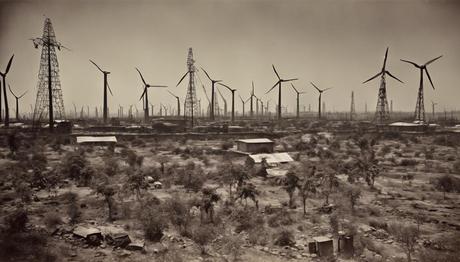
Economic constraints and political challenges play a significant role in India’s energy crisis.
Inadequate investment in the energy sector
Despite growing energy demand, investment in India’s energy sector has been insufficient:
- Power sector investment needs: Estimated at $250 billion over the next 5 years
- Actual investment (2022): $18.8 billion (significantly below required levels)
- Reasons for underinvestment:
- Financial health of power distribution companies
- Regulatory uncertainties
- Land acquisition challenges
- Environmental clearance delays
Regulatory barriers and lack of coordination
India’s energy sector is characterized by complex regulatory frameworks and a lack of coordination between various stakeholders:
- Multiple regulatory bodies: Central and state electricity regulatory commissions, petroleum and natural gas regulatory board, etc.
- Overlapping jurisdictions: Between central and state governments
- Policy inconsistencies: Frequent changes in regulations and policies
- Bureaucratic hurdles: Lengthy approval processes for energy projects
High costs of energy imports
India’s heavy reliance on energy imports imposes significant economic costs:
- Oil import bill (2022-23): $163 billion
- Natural gas import costs (2022-23): $17.6 billion
- Impact on trade deficit: Energy imports account for approximately 30% of India’s total import bill
These high import costs strain India’s foreign exchange reserves and contribute to economic vulnerabilities.
Global Energy Market Dynamics
India’s energy crisis is influenced by global energy market dynamics, including international competition for resources and price fluctuations.
International competition for energy resources
As a major energy importer, India faces stiff competition from other countries for energy resources:
- Competition with China for oil and gas assets in Africa, Central Asia, and Latin America
- Rivalry with other Asian countries for LNG supplies
- Competition for renewable energy technologies and raw materials (e.g., solar panels, rare earth elements)
This competition can lead to higher prices and supply uncertainties for India.
Fluctuations in global energy prices
India’s energy security is vulnerable to global price fluctuations:
- Oil price volatility: Brent crude oil prices ranged from $19.33 to $139.13 per barrel between 2020 and 2022
- Natural gas price fluctuations: Asian LNG spot prices ranged from $1.85 to $84.76 per MMBtu between 2020 and 2022
- Coal price variations: Newcastle coal futures ranged from $50.35 to $457.80 per tonne between 2020 and 2022
These price fluctuations significantly impact India’s energy import costs and domestic energy prices.
Impact of the Energy Crisis
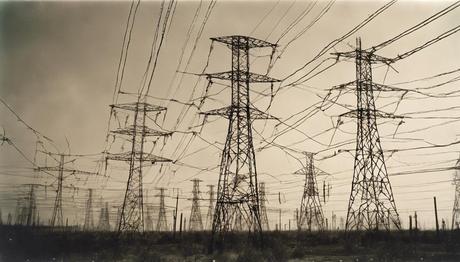
Economic Impact
The energy crisis has far-reaching economic consequences for India, affecting various sectors and overall economic growth.
Increased production costs
Rising energy costs lead to higher production expenses across industries:
- Manufacturing sector: Energy costs account for 10-25% of total production costs
- Agriculture sector: Higher fuel prices increase irrigation and transportation costs
- Services sector: Increased electricity costs impact IT, hospitality, and retail industries
These increased costs reduce profit margins and competitiveness of Indian businesses.
Inflation and its effects on the economy
Energy price increases contribute significantly to overall inflation:
- Fuel inflation (2022-23): 10.4%
- Impact on consumer price index: Energy prices account for 6.84% of CPI basket
- Secondary effects: Higher transportation costs lead to increased prices of goods and services
Inflation erodes purchasing power and can lead to reduced consumer spending, affecting overall economic growth.
Impact on industrial output and growth
Energy shortages and high costs negatively impact industrial output:
- Industrial production growth (2022-23): 5.2% (below potential due to energy constraints)
- Capacity utilization: Many industries operate below full capacity due to power shortages
- Investment decisions: Energy uncertainties deter new investments in manufacturing and other energy-intensive sectors
Social Impact
The energy crisis has significant social implications, affecting daily life and exacerbating inequalities.
Power outages affecting daily life
Frequent power cuts disrupt various aspects of daily life:
- Education: Affects study hours and use of digital learning tools
- Healthcare: Impacts medical equipment and storage of vaccines/medicines
- Small businesses: Reduces operational hours and productivity
- Household activities: Disrupts cooking, lighting, and use of appliances
A survey in 2022 found that 43% of Indian households experienced power cuts of 4 hours or more per day during summer months.
Disparities in energy access between urban and rural areas
The energy crisis highlights and exacerbates urban-rural disparities:
- Electrification rates:
- Urban areas: 99.9%
- Rural areas: 96.7%
- Quality of supply:
- Urban areas: Average 22 hours of power supply per day
- Rural areas: Average 18 hours of power supply per day
- Per capita electricity consumption:
- Urban: 1,285 kWh/year
- Rural: 366 kWh/year
These disparities contribute to wider socio-economic inequalities between urban and rural populations.
Environmental Impact

The energy crisis, particularly the reliance on fossil fuels, has severe environmental consequences.
Increased greenhouse gas emissions
India’s energy sector is a major contributor to greenhouse gas emissions:
- Total GHG emissions (2022): 3.5 billion tonnes CO2 equivalent
- Energy sector contribution: 75% of total emissions
- Per capita emissions: 2.4 tonnes CO2 (2022)
These emissions contribute to global climate change and its associated impacts.
Degradation of natural resources
Energy production and consumption lead to various forms of environmental degradation:
- Air pollution: 21 of the world’s 30 most polluted cities are in India
- Water pollution: Coal mining and thermal power plants contaminate water bodies
- Deforestation: Coal mining and infrastructure development lead to loss of forest cover
- Soil degradation: Mining activities and ash disposal from power plants affect soil quality
Mitigation Strategies
Addressing India’s energy crisis requires a multi-faceted approach, encompassing various strategies to enhance energy security, improve efficiency, and promote sustainability.
Enhancing Domestic Production
Increasing domestic energy production is crucial for reducing import dependence and enhancing energy security.
Boosting coal and oil production
Despite environmental concerns, India is focusing on increasing domestic coal and oil production in the short to medium term:
- Coal production target (2023-24): 1 billion tonnes
- Oil production target (2023-24): 32.3 million tonnes
Strategies include:
- Opening new coal blocks for commercial mining
- Enhancing productivity of existing mines through mechanization
- Exploring unconventional hydrocarbons like coal bed methane and shale gas
Improving mining and extraction technologies
Adoption of advanced technologies can improve efficiency and reduce environmental impact:
- Underground coal gasification
- Enhanced oil recovery techniques
- Hydraulic fracturing for shale gas extraction
- Use of artificial intelligence and IoT in mining operations
Infrastructure Development
Upgrading and expanding energy infrastructure is essential for improving reliability and access.
Upgrading Existing Energy Infrastructure
Modernization of existing infrastructure can significantly improve efficiency:
- Renovation and Modernization of Old Thermal Power Plants: Many of India’s thermal power plants are outdated and inefficient. Upgrading these plants with modern technology can enhance their efficiency and reduce emissions.
- Upgrading Transmission Lines: Reducing transmission losses is crucial. India has one of the highest transmission and distribution losses in the world, estimated at around 20%. Upgrading transmission lines and implementing advanced grid management systems can help reduce these losses.
- Smart Grid Implementation: The adoption of smart grid technologies can improve the reliability and efficiency of the power supply. Smart grids use digital communication technology to detect and react to local changes in usage, improving the balance between supply and demand.
Expanding Rural Electrification Programs
Expanding and improving rural electrification is vital for ensuring equitable access to energy:
- Deendayal Upadhyaya Gram Jyoti Yojana (DDUGJY): This scheme focuses on rural electrification, including the separation of agricultural and non-agricultural feeders to ensure reliable power supply to rural households.
- Saubhagya Scheme: Launched in 2017, the Saubhagya scheme aims to provide electricity connections to all households in rural and urban areas. As of 2023, over 26 million households have been electrified under this scheme.
- Solar Power for Rural Areas: Decentralized solar power solutions, such as solar home systems and mini-grids, can provide reliable and sustainable electricity to remote and off-grid areas.
Diversification of Energy Sources
Increasing investment in renewable energy sources and developing nuclear energy capabilities are key strategies for reducing dependence on fossil fuels.
Increasing Investment in Renewable Energy
India has set ambitious targets for renewable energy capacity, aiming to achieve 500 GW of renewable energy installed capacity by 2030. Key areas of focus include:
- Solar Energy: India is one of the world’s largest markets for solar energy. The country aims to install 280 GW of solar capacity by 2030. Initiatives like the International Solar Alliance and the development of solar parks in states like Rajasthan and Gujarat are crucial for achieving this target.
- Wind Energy: India has significant potential for wind energy, particularly in states like Tamil Nadu, Gujarat, and Maharashtra. The country aims to achieve 140 GW of wind capacity by 2030.
- Hydropower: Hydropower is a reliable and renewable source of energy. India has a potential of around 145 GW of hydropower capacity, of which approximately 50 GW has been developed so far.
Development of Nuclear Energy Capabilities
Nuclear energy is a crucial component of India’s strategy to diversify its energy mix and reduce carbon emissions:
- Current Capacity and Future Plans: India currently has 22 operational nuclear reactors with a total capacity of 6.78 GW. The country plans to increase its nuclear capacity to 22.5 GW by 2031.
- New Projects: Several new nuclear projects are in the pipeline, including the construction of 10 new reactors with a total capacity of 7 GW.
Energy Efficiency Measures
Promoting energy-efficient technologies and practices can significantly reduce overall energy consumption and improve sustainability.
Promoting Energy-Efficient Technologies and Practices
Energy efficiency measures can be implemented across various sectors:
- Industrial Sector: The Perform, Achieve, and Trade (PAT) scheme aims to improve energy efficiency in energy-intensive industries. The scheme has resulted in significant energy savings and reduced emissions.
- Residential Sector: Promoting the use of energy-efficient appliances, such as LED lighting and energy-efficient air conditioners, can reduce household energy consumption.
- Transportation Sector: Encouraging the use of electric vehicles (EVs) and improving public transportation can reduce fuel consumption and emissions.
Implementing Stricter Energy Consumption Regulations
Regulations and standards play a crucial role in promoting energy efficiency:
- Building Codes: The Energy Conservation Building Code (ECBC) sets minimum energy performance standards for new commercial buildings. Implementing and enforcing ECBC can lead to significant energy savings.
- Appliance Standards: The Bureau of Energy Efficiency (BEE) has established energy efficiency standards and labeling programs for various appliances. These standards help consumers make informed choices and promote the use of energy-efficient products.
Policy and Regulatory Reforms
Streamlining regulatory processes and encouraging private sector investment are essential for enhancing the energy sector’s growth and stability.
Streamlining Regulatory Processes
Simplifying regulations can attract investment and improve efficiency:
- Single-Window Clearance: Implementing a single-window clearance system for energy projects can reduce delays and bureaucratic hurdles.
- Policy Consistency: Ensuring consistency and stability in energy policies can build investor confidence and encourage long-term investments.
Encouraging Private Sector Investment
Private sector participation is crucial for meeting India’s energy investment needs:
- Public-Private Partnerships (PPPs): Encouraging PPPs in the energy sector can leverage private sector expertise and funding.
- Incentives and Subsidies: Providing incentives and subsidies for renewable energy projects can attract private investment and accelerate the deployment of clean energy technologies.
International Cooperation
Strengthening energy trade partnerships and participating in global energy initiatives can enhance energy security and sustainability.
Strengthening Energy Trade Partnerships
Building strong energy trade relationships with other countries can improve energy security:
- Oil and Gas Imports: Diversifying sources of oil and gas imports can reduce dependence on any single country and enhance energy security.
- Renewable Energy Technology: Collaborating with countries that have advanced renewable energy technologies can facilitate technology transfer and capacity building.
Participating in Global Energy Initiatives
India’s participation in global energy initiatives can promote sustainable energy development:
- International Solar Alliance (ISA): India is a founding member of the ISA, which aims to promote solar energy deployment globally. The ISA provides a platform for collaboration and knowledge sharing among member countries.
- Mission Innovation: India is a member of Mission Innovation, a global initiative to accelerate public and private clean energy innovation. Participation in this initiative can help India access cutting-edge technologies and best practices.
Case Studies and Examples
Examining successful renewable energy projects and international comparisons can provide valuable insights and lessons for addressing India’s energy crisis.
Successful Renewable Energy Projects
India has implemented several successful renewable energy projects that demonstrate the potential for clean energy deployment.
Solar Power Initiatives in Rajasthan and Gujarat
- Rajasthan: The state of Rajasthan is home to some of India’s largest solar power projects, including the Bhadla Solar Park, which has a capacity of 2.25 GW. The state’s high solar irradiance and vast land availability make it ideal for solar energy development.
- Gujarat: Gujarat has been a pioneer in solar energy, with projects like the Charanka Solar Park, which has a capacity of 600 MW. The state has also implemented innovative policies, such as the Solar Rooftop Program, to promote distributed solar generation.
Wind Energy Projects in Tamil Nadu
- Tamil Nadu: Tamil Nadu is a leader in wind energy in India, with an installed capacity of over 9.5 GW. The state’s favorable wind conditions and supportive policies have attracted significant investment in wind power projects.
International Comparisons
Comparing India’s energy transition with other countries can provide valuable insights and lessons.
Lessons from Germany’s Energiewende
- Energiewende: Germany’s Energiewende (energy transition) is a comprehensive policy framework aimed at phasing out nuclear power and increasing the share of renewable energy. Key lessons from Germany’s experience include the importance of policy stability, public support, and investment in grid infrastructure.
China’s Approach to Energy Diversification
- China: China has made significant investments in renewable energy, becoming a global leader in solar and wind power. The country’s approach to energy diversification includes large-scale deployment of renewables, investment in energy storage technologies, and strong government support for clean energy initiatives.
Future Outlook
India’s energy sector is poised for significant growth and transformation in the coming years. Understanding future projections and long-term sustainability goals is crucial for planning and policy-making.
Projections for Energy Demand
India’s energy demand is expected to continue growing, driven by population growth, urbanization, and economic development.
Expected Growth in Energy Consumption
- Energy Consumption Projections: India’s energy consumption is projected to grow at an average annual rate of 4.5% over the next decade. By 2030, the country’s total energy demand is expected to reach 1,500 million tonnes of oil equivalent (Mtoe), up from 880 Mtoe in 2020.
- Sectoral Demand: The industrial sector is expected to account for the largest share of energy demand, followed by the residential and transportation sectors.
Potential Impact of Technological Advancements
- Energy Efficiency: Advances in energy-efficient technologies can help reduce overall energy consumption. For example, the widespread adoption of LED lighting and energy-efficient appliances can significantly lower electricity demand.
- Renewable Energy: Technological advancements in solar and wind energy, coupled with improvements in energy storage, can enhance the reliability and affordability of renewable energy.
- Smart Grids: The implementation of smart grid technologies can improve the efficiency and resilience of the power grid, enabling better integration of renewable energy sources.
Long-term Sustainability Goals
India has set ambitious long-term goals for achieving energy security and sustainability, including commitments to carbon neutrality.
India’s Commitment to Carbon Neutrality by 2070
- Net-Zero Emissions: India has pledged to achieve net-zero carbon emissions by 2070. This commitment involves reducing greenhouse gas emissions across all sectors, increasing the share of renewable energy, and enhancing energy efficiency.
- Interim Targets: To achieve this long-term goal, India has set interim targets, including reducing the emissions intensity of its GDP by 33-35% by 2030 (compared to 2005 levels) and increasing the share of non-fossil fuel energy capacity to 50% by 2030.
Roadmap for Achieving Energy Security and Sustainability
- renewable energy Expansion: Scaling up renewable energy capacity to 500 GW by 2030 is a key component of India’s roadmap. This includes significant investments in solar, wind, and hydropower projects.
- Energy Efficiency Measures: Implementing energy efficiency measures across all sectors can help reduce energy consumption and emissions. This includes promoting energy-efficient technologies, setting stringent efficiency standards, and encouraging behavioral changes.
- Policy and Regulatory Reforms: Streamlining regulatory processes, ensuring policy stability, and providing incentives for clean energy investments are crucial for achieving long-term sustainability goals.
- International Collaboration: Engaging in international collaborations and partnerships can facilitate technology transfer, access to finance, and knowledge sharing, supporting India’s energy transition.
Conclusion
Addressing the energy crisis in India requires a comprehensive and multi-faceted approach that encompasses enhancing domestic production, improving infrastructure, diversifying energy sources, promoting energy efficiency, and implementing policy and regulatory reforms. By leveraging technological advancements, fostering international cooperation, and committing to long-term sustainability goals, India can overcome its energy challenges and achieve energy security and sustainability.
Recap of Key Points
- Limited Domestic Resources: India’s limited coal, oil, and gas reserves necessitate heavy reliance on imports.
- Infrastructure Issues: Inadequate and outdated energy infrastructure leads to frequent power cuts and inefficiencies.
- Increasing Demand: Population growth, industrialization, and economic recovery are driving up energy demand.
- Dependence on Fossil Fuels: Over-reliance on coal and slow transition to renewables pose significant challenges.
- Supply Chain Disruptions: Global supply chain issues and geopolitical events impact energy security.
- Climate and Environmental Factors: Extreme weather events and environmental concerns affect energy production.
- Economic and Political Factors: Inadequate investment, regulatory barriers, and high import costs exacerbate the crisis.
- Global Market Dynamics: International competition and price fluctuations influence India’s energy landscape.
